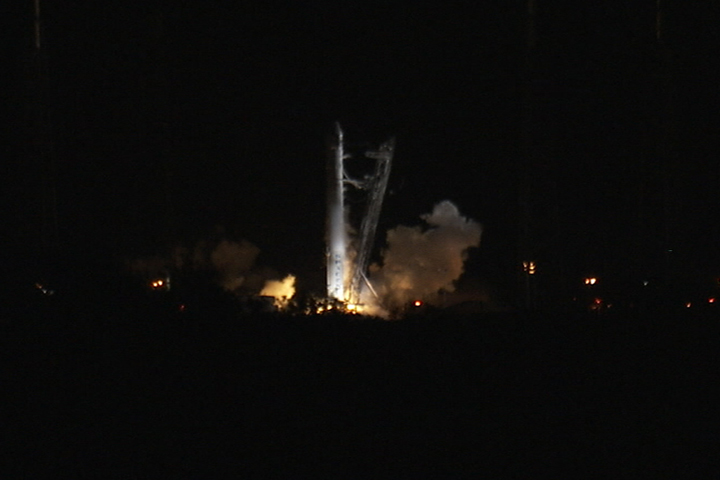SpaceX Hopes to Launch Private Spacecraft to Space Station Tuesday

CAPE CANAVERAL, Fla. — The private rocket company SpaceX is hoping the second time's the charm for its planned launch of the Dragon capsule to the International Space Station.
The company had planned to launch the unmanned Dragon May 19, but an engine glitch on its Falcon 9 rocket in the last second before liftoff forced an abort. Engineers traced the issue to a failed check valve in the engine, and replaced it Saturday evening.
The next opportunity for Dragon to lift off comes Tuesday (May 22) at 3:44 a.m. EDT (0744 GMT) from here at Cape Canaveral Air Force Station. A potential backup launch window opens on Wednesday (May 23) at 3:22 a.m. EDT (0722 GMT).
Dragon's inaugural trip to the space station will be the first visit there of a non-governmental vehicle. The mission is the final test flight before the capsule is certified to begin delivering cargo to the station under a deal through NASA's COTS program (Commercial Orbital Transportation Services).
"The partnership we've been able to forge between NASA and SpaceX has been a huge success story," Phil McAlister, NASA's director of Commercial Spaceflight Development. "This partnership with two very different organizations, cultures, expectations, histories, have come together and stood the test of time."
It will be the second trip to orbit for a Dragon capsule, which first launched in December 2010. Falcon 9 has made two launches before, both successful.
"What will be different about this one is they'll actually fly up to and be berthed at the International Space Station, where their Dragon module will actually become a part of the International Space Station for some period of time, so that's really important," NASA administrator Charles Bolden told SPACE.com in April.
Breaking space news, the latest updates on rocket launches, skywatching events and more!
Though the stakes are high for SpaceX to prove itself, as well as validate NASA's new approach toward partnering with commercial space companies, both the firm and the space agency have maintained that the upcoming flight is a test, and comes with risks.
"This is a test flight," SpaceX president Gwynne Shotwell said during a briefing last week. "What's important form a SpaceX perspective on a test flight is to make sure we learn something."
SpaceX (officially Space Exploration Technologies Corp.) is based in Hawthorne, Calif.
You can follow SPACE.com assistant managing editor Clara Moskowitz on Twitter @ClaraMoskowitz. Follow SPACE.com for the latest in space science and exploration news on Twitter @Spacedotcom and on Facebook.
Join our Space Forums to keep talking space on the latest missions, night sky and more! And if you have a news tip, correction or comment, let us know at: community@space.com.

Clara Moskowitz is a science and space writer who joined the Space.com team in 2008 and served as Assistant Managing Editor from 2011 to 2013. Clara has a bachelor's degree in astronomy and physics from Wesleyan University, and a graduate certificate in science writing from the University of California, Santa Cruz. She covers everything from astronomy to human spaceflight and once aced a NASTAR suborbital spaceflight training program for space missions. Clara is currently Associate Editor of Scientific American. To see her latest project is, follow Clara on Twitter.
